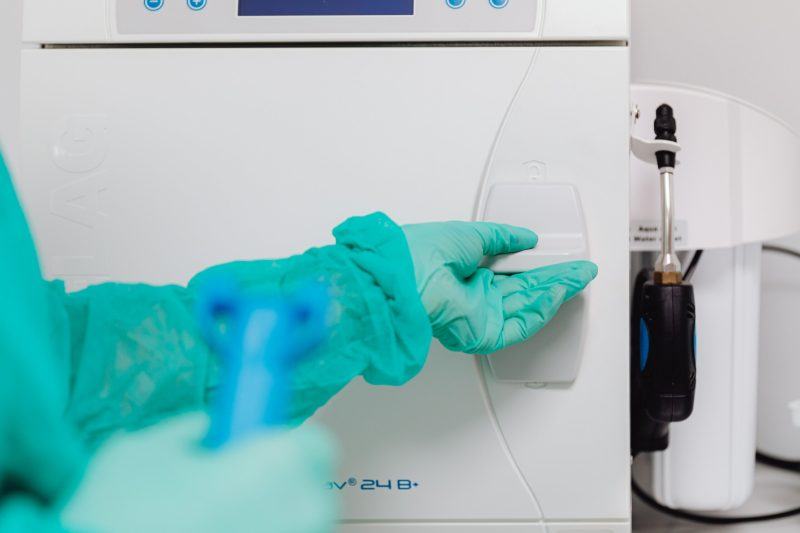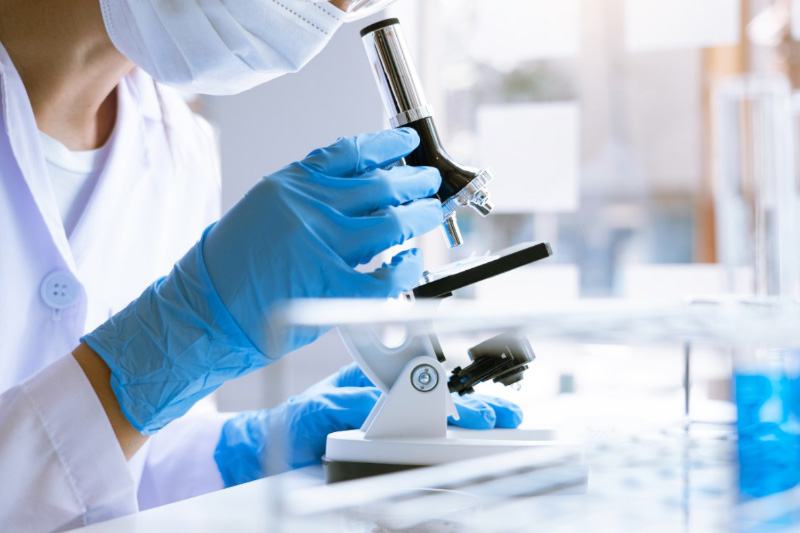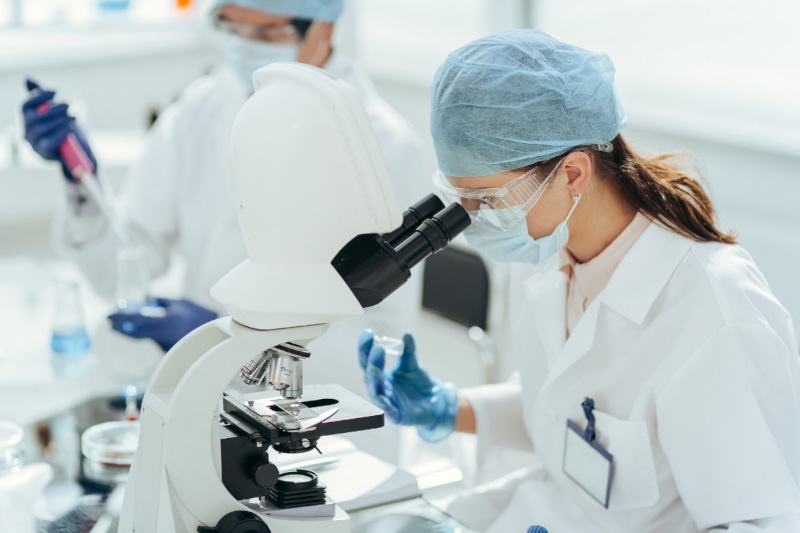Your cart is currently empty!
Medical Device Sterility Testing and Validation
Ensuring the Safety of Patients
Making sure your medical device is free from harmful microorganisms is essential for ensuring patient safety. These microorganisms can be introduced at any stage during the manufacturing or packaging process. While it is not possible to guarantee that 100% of microorganisms have been removed, if properly designed and executed, most processes are highly effective at ensuring no living microorganisms remain on a medical device after sterilization. The goal is to design and validate a process where sterilization efficacy is maximized and the chance of false negative sterility results is minimized.

Sterility Testing and Validation
NAMSA has an extensive team of medical device microbiologists, toxicologists, and other testing specialists on staff at our labs located in the United States and Europe. All sterilization testing is conducted in ISO Class 5 lab environments. NAMSA conducted nearly 120,000 tests on medical devices last year and as a result, we have experience with a vast range of devices. We can assist in the following areas:
- Sterility testing
- Sterility validation
- Reprocessing validation
- Product release testing
- EO residuals testing
- ISO 11137 verification dose and dose audits
Sterilization Validation
Every manufacturer wants to do everything possible to prevent patient infections and ensure their devices are properly sterilized. However, it’s impossible to test every device for sterility as doing so would introduce new contaminants! By carefully validating the chosen sterilization method, manufacturers can eliminate the microbial load on the device to an acceptable level, ensuring patient safety.
NAMSA offers sterilization validation for processes including radiation sterilization by either gamma radiation or electron beam, ethylene oxide gas sterilization, hydrogen peroxide sterilization and thermal sterilization (both moist and dry heat).
We are renowned for our ability to create custom protocols that meet our clients’ testing budgets and are also supported by a complete documentation package that helps fulfill all regulatory requirements.
Sterility Testing
Sterility testing is a qualitative assay, aiming to ensure no living microorganisms are present on a medical device after sterilization.
Sterility testing can be conducted for various reasons (on medical devices or biological indicators for sterilization validation, batch release testing, monitoring, etc.). ISO 11737-2 describes the methodology, but its scope is strictly limited to medical device testing and sterilization validation using a reduced or partial sterilization exposure.
Additional standards for sterility testing include the United States Pharmacopeia (USP) or European Pharmacopoeia. These can be used as standards for sterility testing employing a complete sterilization exposure or testing on biological indicators. However, USP and European Pharmacopoeia are specific to pharmaceuticals and not adapted for non-divisible products like medical devices.
At NAMSA, we support clients by designing custom protocols that not only meet testing budgets, but are also backed by a complete documentation package that fulfills all necessary regulatory requirements for sterilization validation.
Reprocessing Process Validation Support
Effectively reprocessing single-use and reusable medical devices is a vital component of preventing patient infections and ensuring patient safety. It is the manufacturer – not the care provider – that is responsible for providing complete and comprehensive written instructions for the reprocessing of their device(s). This requires the scientific validation of the cleaning, disinfection and/or sterilization reprocessing methods used for their device, to ensure it can be used/reused in the way it is intended.
NAMSA experts have the experience and knowledge to guide device manufacturers from the device design phase through reprocessing validation support, including identifying design constraints that may negatively impact cleaning, disinfection and/or sterilization, developing or refining Instructions for Use (IFU) and preparing reprocessing validation protocols and summary reports.
Lot, Batch, Shipment, or Product Release Testing
Medical Device Lot, Batch, Shipment, or Product Release Testing is a critical process to ensure that medical devices meet the required quality and safety standards before they are distributed or sold. This testing involves evaluating a group of devices produced under the same conditions to verify their sterility, packaging integrity, performance characteristics, and compliance with regulatory standards. The goal is to ensure that every unit within a lot, batch, or shipment is safe for use and performs as intended.
Rapid and expert-led testing is key to ensuring the safety and reliability of medical devices. At NAMSA, we’re committed to supporting your testing needs with our expertise in microbiological quality control. Our lot release testing is a crucial step in the medical device manufacturing process that helps detect microbial contamination and ensures product quality. With our help, you can achieve accurate, reproducible results for in-process and final release microbiological testing.
Ethylene Oxide (EO) Residuals Testing
Ethylene Oxide (EO) Residuals Testing is essential for ensuring the safety and compliance of medical devices sterilized using EO gas. This testing measures the amount of EO gas remaining on the device after sterilization to ensure it is within safe limits. High levels of EO residuals can be harmful to patients, so it’s crucial to validate and optimize the sterilization process. NAMSA’s dedicated team of experts assists in reviewing, designing, and validating EO sterilization processes, supporting to optimize sterilization cycles to minimize EO residuals while ensuring effective sterilization.
Additionally, NAMSA offers validation services for other sterilization methods, such as gamma and E-beam radiation, and provides guidance on Vaporized Hydrogen Peroxide (VHP) sterilization options. This comprehensive approach ensures that medical devices meet regulatory standards and maintain high safety and efficacy levels.
Why Companies Choose NAMSA
EO Residuals Tests Completed Last Year
Medical Device Tests Conducted Last Year
Global Lab Locations Doing Medical Device Testing
Board-Certified DaBT Toxicologists on Staff
Why Clients Choose NAMSA
Meet NAMSA’s Experts
Explore the depth of our team’s expertise in medical device biocompatibility, microbiology and sterility.
-
Julie S. Tuinstra
 Validation ScientistView Bio
Validation ScientistView Bio -
Ed Arscott, BS
 Principal Strategy Consultant, MicrobiologyView Bio
Principal Strategy Consultant, MicrobiologyView Bio -
Marie-Eve Cluzel-Valentin
 Principal Biological Safety and Validation ScientistView Bio
Principal Biological Safety and Validation ScientistView Bio -
Frédéric Cadoret, PhD
 Senior Study Director, Sterility AssuranceView Bio
Senior Study Director, Sterility AssuranceView Bio -
Shazia A. Siddiqui, MS, NRCM
 Principal MicrobiologistView Bio
Principal MicrobiologistView Bio -
Shelley L. Green, BS
 Senior Validation ScientistView Bio
Senior Validation ScientistView Bio
Other Services That May Interest You

Microbiology Testing
